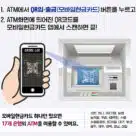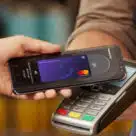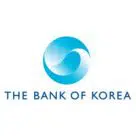11 news stories.
• Should The Bank of Korea be in the NFCW Expo? Is this your organisation? Find out how to get your NFCW Expo showcase.
• Should The Bank of Korea be in the NFCW Expo? Is this your organisation? Find out how to get your NFCW Expo showcase.

Consumers in Korea can now make cash withdrawals and deposits at ATMs by scanning a QR code with their Apple or Android smartphone rather than needing to use a physical bank card... More

The Bank of Korea (BOK) and Samsung are to test using NFC to make offline central bank digital currency (CBDC) transactions with Galaxy smartphones and smart watches without needing an internet connection... More

The Bank of Korea (BOK) is to review additional central bank digital currency (CBDC) design options after its 10-month experiment to test a retail CBDC based on distributed ledger technology (DLT) revealed “limitations of scalability” such as slow processing times during periods of high transaction volume when compared with a more conventional centralised ledger database, the bank says... More

The Bank of Korea (BOK) is to issue and circulate a central bank digital currency (CBDC) in 2021 to test its viability as an alternative to cash and other forms of transaction... More
Central bank to develop settlement service to expand mobile cash card payment — Yonhap News — “The South Korean central bank said Tuesday that it will adopt a new mobile cash card settlement service starting next year in a bid to expand simplified mobile payments in the country. A council on financial information by the Bank of Korea (BOK) and local banks decided to develop technological standards and a mobile application for the new service that enables sellers to receive money directly from the buyer’s bank account.”
BOK will not issue digital money — Korea Times — “The Bank of Korea (BOK), the country’s central bank, said Monday it opposes the idea of central bank digital currency (CBDC)… The bank is worrying over concerns that such a sudden launch of the CBDC will cost society a lot and cause a moral hazard. Also, issuing CBDC could destabilize the market order because digital currencies don’t currently constitute money.”
More than quarter of South Koreans use mobile payment services — The Korea Times — “The survey of 2,500 adults, conducted by the Bank of Korea (BOK) between September and October last year, showed that 26.1% of respondents had used a mobile device such as a smartphone or tablet computer for payment services in the previous six months… Online purchasing was the most frequently used service through mobile devices with 86.6%, followed by offline mobile settlement with 34.7% and mobile transportation payment with 21.6%.”
The Bank of Korea (BOK) has signed up retailers including CU, 7-Eleven, E-Mart, Lotte Mart and Lotte Department Store to begin trialling a service that will give customers change in the form of a top-up to a prepaid card... More

South Korea’s Financial Services Commission (FSC) is planning to launch a pilot in the first half of 2017 that will allow consumers to make payments at the point of sale using palm vein authentication technology, without the need of a physical payment card... More

The Bank of Korea (BOK) is to pilot a service that allows merchants to give customers change in the form of a top-up onto a prepaid card instead of coins... More
One in six South Korean consumers (15.8%) have used a mobile to pay for in-store or online purchases, research by The Bank of Korea shows... More